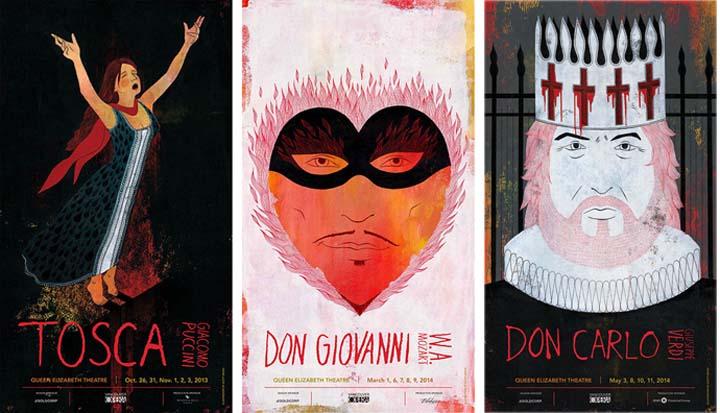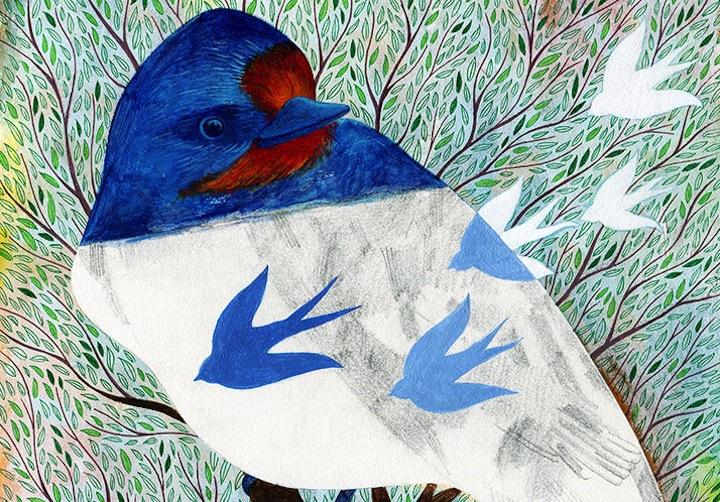Scott Bakal: The Q&A
As a former New Yorker transplanted to Boston, what are some of your favorite things about living and working there?
Unfortunately, I don’t feel I that I've taken advantage of the
city as I should during the last four years but I do frequent Boston’s Museum of Fine Arts and other museums whenever possible.
Boston is cool because it is a very compartmentalized city compared to what I was used to with New York. It’s easily walkable and pretty vibrant in all the arts. There is always a gallery opening to go to, music to see and a new restaurant to try out. It’s hard to get bored here.
How and when did you first become interested in art and illustration?
It’s hard to
know when I first got interested in art. I was really young when I started drawing. My earliest memory of anyone in my life commenting that I was an artist was probably around
2nd grade. I remember my Mom bringing home copy paper from work and I would draw for hours and that habit never subsided. I still have some of those drawings. I was never really
encouraged to be an artist by my family. We were very blue collar and they were a bit worried and not incredibly supportive when I decided to go to art school but they didn’t get in the way.
Even as a kid, I was always independent and self-sufficient. While they had no clue about art other than that I really enjoyed it (I never went to a museum until I entered college) they figured I was
going to make it happen or fail and do something else.
I became interested in illustration specifically at my entrance interview at the School of Visual Arts. I put down that I wanted to go into Advertising. I thought there was only either ‘Fine Art’ or ‘Advertising’ so I put down Advertising because I figured that is the type of art job I could make money from. After seeing my portfolio, the interviewer defined the different areas of concentration and when she described what ‘Illustration’ was in relation to what I had included in my portfolio, I knew that’s the direction I wanted to go.

Scott Bakal: Posters for the
Vancouver Opera.
What is your favorite part of the creative process?
It depends what part of the project I am working on and whether or not I am succeeding or
failing at it at the moment. The whole process of being an artist is what excites me.
Who and what are some of your strongest influences?
Dead and alive, there are so many
influences come from many different professions – filmmaking, photography, fine art, music, animation, illustration and so on. They also change over time. As I progress in art and my interests,
my influences and inspirations change. I know this is isn’t a straight-forward answer but the shortest way to put it is that I am influenced by the parts of the world around me that
interest me at the moment.
What was the last art exhibition you saw and what did you take away from it?
John Singer Sargent Watercolors at Boston’s Museum of Fine
Arts. This is sort of cheating because I had already seen it in Brooklyn – because, why see it once? I saw the show 4 times. This show reminded me about how to understand the translation of
life to a piece of paper in a personal and adept way. I will never paint like him nor do I want to but what is exciting is his ability to build an image in his loose abstracted way and it floors me every time I see it.
The takeaway is that anything is possible and seeing a show like this inspires me to look at the way I handle the brush, pen or pencil and see where else I can take my work.
Do you keep a sketchbook? What is the balance between the art you create on paper
versus In the computer?
I keep many sketchbooks. That is the heart of my work. I keep ‘play’ sketchbooks, which are either Moleskines or Hand•Books where
I am constantly experimenting with different media, brushes, pens and subject matter. I also have ‘work’ sketchbooks, which are a 9”x12” Strathmore pads where I only develop
client work. It’s all in pencil and that sketchbook is only about building ideas.
The two types of sketchbooks work together in my process, which turns into the final work that gets published.
Most of my work is done traditionally but I have been doing more of a combination of traditional and digital recently, mostly out of necessity. It has crossed my mind to do more work digitally but I am not forcing it. I make art in whatever way I need to do the job at the moment. While I prefer the esthetic of something hand made, for illustration work, I do what is necessary to do the best job I can.
What is the most important item in your studio?
It feels shallow to say but probably my computer. To be romantic about it, artistically, my art supplies
are the things that are really important to me. My paint, pens and pencils.

Scott's
sketchbooks and tools of the trade.
What are you listening to?
I go through different stages but in the last couple of weeks, I cannot get enough of The Breeders.
Recently, Kim Deal has released a bunch of singles which are constantly playing in the studio lately. I have been in the mood for Kim Deal’s
vocal charm and sloppiness in the music. A few weeks before that, Black Sabbath was in heavy rotation. Before that, Dean Martin.
What are you reading?
Unfortunately,
because of weird schedules, I read more during the summer. I go back and forth between fiction and non-fiction. Throughout the rest of the year, lately I have subscriptions to WIRED, GQ,
Details and The New Yorker that I squeeze in reading whenever I can. I do have a subscription to The New York Times, which is a daily read for me.
What is your hobby?
I’ve been asked this throughout my life and I never really had a good answer for it. Usually, I would answer ‘making art’ is my
hobby but I am not sure if a hobby is supposed to be an act that involves making money or not. A hobby is supposed to be enjoyable which I guess where the delineation of ‘work’ which most
people don’t like to do and ‘hobby’ which people like to do outside of work comes from.
It seems that everything I do, somehow relates to creativity, the running of my
business or it satisfies a portion of my personality. So, when I am working on gardening, archiving stuff, photography or filmmaking, is it a hobby? I’m not sure.
A long time ago, I decided to live life a particular way. To do whatever that was
enjoyable that I found interesting and figure out how to earn income from it. While income is important and I fret about it regularly, it always was a secondary concern over having experiences and
enjoying life. It all funnels back to my growth as a person and informing and expanding the things I like to do. Is it work? Is it a hobby? It’s a blurred line in my life.
What are some of the collective art interactions you participate in your area and what’s the takeaway?
About once a month, I get together with other illustrators in
the area and we eat, drink and show each other what we’ve been working on recently. In New York, you can throw a stone in any direction and hit an illustrator. Up here, the pack is sort of
thinned out so I need to work at getting together with like-minded people. It’s great to get feedback from people who know where you are coming from and share what’s going on.
Have you ever had a creative block with a deadline looming? What do you do to get crackin’?
Creative blocks come standard with the job. I get out of them by drawing more,
researching more, listing to music, watching a film, going for a walk or run or simply doing something else for a little while.
Where do you teach—and what do you like best about
teaching?
I teach illustration at the Massachusetts College of Art and Design. The best part of teaching is the interaction I have with the students. Of course, I hope they learn something in
my classes but I learn so much from them. I love to find out what is inspiring different generations.
It seems, as we get older, we tend to shy away from being knee deep in current pop culture as we were in our twenties. The importance of things changes as we age. I’ve had many formative creative and artistic experiences in the early 90’s but many of my students now were just born at that time, so there is a gap of the understanding of influential forces of art, society, politics and culture during our individual eras. The eras each of us grew up in have a profound influence of how we see the world and as I’ve observed, it creates a gap between teacher and student.
I always welcome my students to show me what they’re looking at, what inspires
them and what make them tick. Selfishly, this informs my art, my way of thinking and life, but my understanding of what they’re going through, I think, also helps me connect with the students
and be a better teacher. At least I hope it does. 
Scott Bakal: Artwork for
Orange Coast Magazine (detail)
What advice would you give a young artist on selecting an art school or college?
Know what you’re getting into – both
the school and the business. Let’s face it, when schools are charging upwards to $50,000 a year to be educated in illustration, the student seriously needs to research and know the facilities,
the reputation of the school, and the professors—both full timers and adjuncts—before making a choice. Even if it means waiting a year after you graduate high school, do yourself some due
diligence and research. Honestly, even as a professor at an art school, admittedly at a school with a lower tuition than many others because of the ‘state school’ designation, it’s
really hard to stomach the thought of a student leaving art school with a $200,000 student loan bill to come into a business that so many of the graduates do not remain illustrators within 5 years of
graduating.
Once students have made their decision, they need to work harder than they ever could imagine in order to get started as an illustrator. But when it works out, in my opinion, it is one of the most interesting and fulfilling jobs an artist could have. They could have the freedom to live their lives the way they want but also, to interject their opinions and ideas into their work is an amazing trade-off for the early struggles most new illustrators will face.
Links:
Drawger: www.drawger.com/scottbakal
Facebook: Facebook Page
Twitter: https://twitter.com/scottbakal
Instagram: http://instagram.com/scottbakal
Float Process Film: https://vimeo.com/48363106


